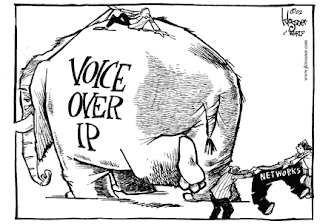Many of our friends (including some of us) have become Apple fans. The unwavering loyalty of many Mac users is astonishing. They defend their aluminium unibody notebook computers with passion. This blogger shares his experience with the new Macbook Air.
From ioshints.com, written by Ivan Pepelnjak
MACBOOK AIR – MIXED FEELINGS (OR IS IT JUST ME)
If you read my Twitter stream, you’ve probably realized I’d been stupid enough to decide to do another multi-vendor experiment: I’m trying to figure out whether an old grump can adapt to a MacBook Air.
No problems so far with reliability or software stability. I love the design (who doesn’t), the speed, the weight, and the fact that OSX is Unix-based. Opening gedit from a remote Linux box on which I have to change a few config files, doing ssh or running perl without installing tons of add-on software is a godsend ... but I still have the feeling that MacBook is a toy designed for creative people, not for people who have to get a job done.
Let’s start with the menus. There’s a reason I know every possible shortcut and Ctrl-Shift-Alt/Something/Something-else-totally-weird combination in every program I use – I can blind-type and I don’t want to waste my time moving to the mouse, carefully positioning it to the top of the screen (not top-of-window, that would be way too close), and wandering through menus to select what I need.
I can use most of the Windows applications I need without mouse. I almost never use Mouse in Word and PowerPoint is the only major exception, but even there I use mouse only to position the objects (and I would use arrow keys if I could somehow select the objects) and deal with the keyboard stupidities Microsoft created in place of the traditional menus. With Mac, using Office for Mac or any other program, I waste more than half of my time playing with the trackpad...
Read the rest here
Source URL: http://blog.ioshints.info/2011/11/macbook-air-mixed-feelings-or-is-it.html



